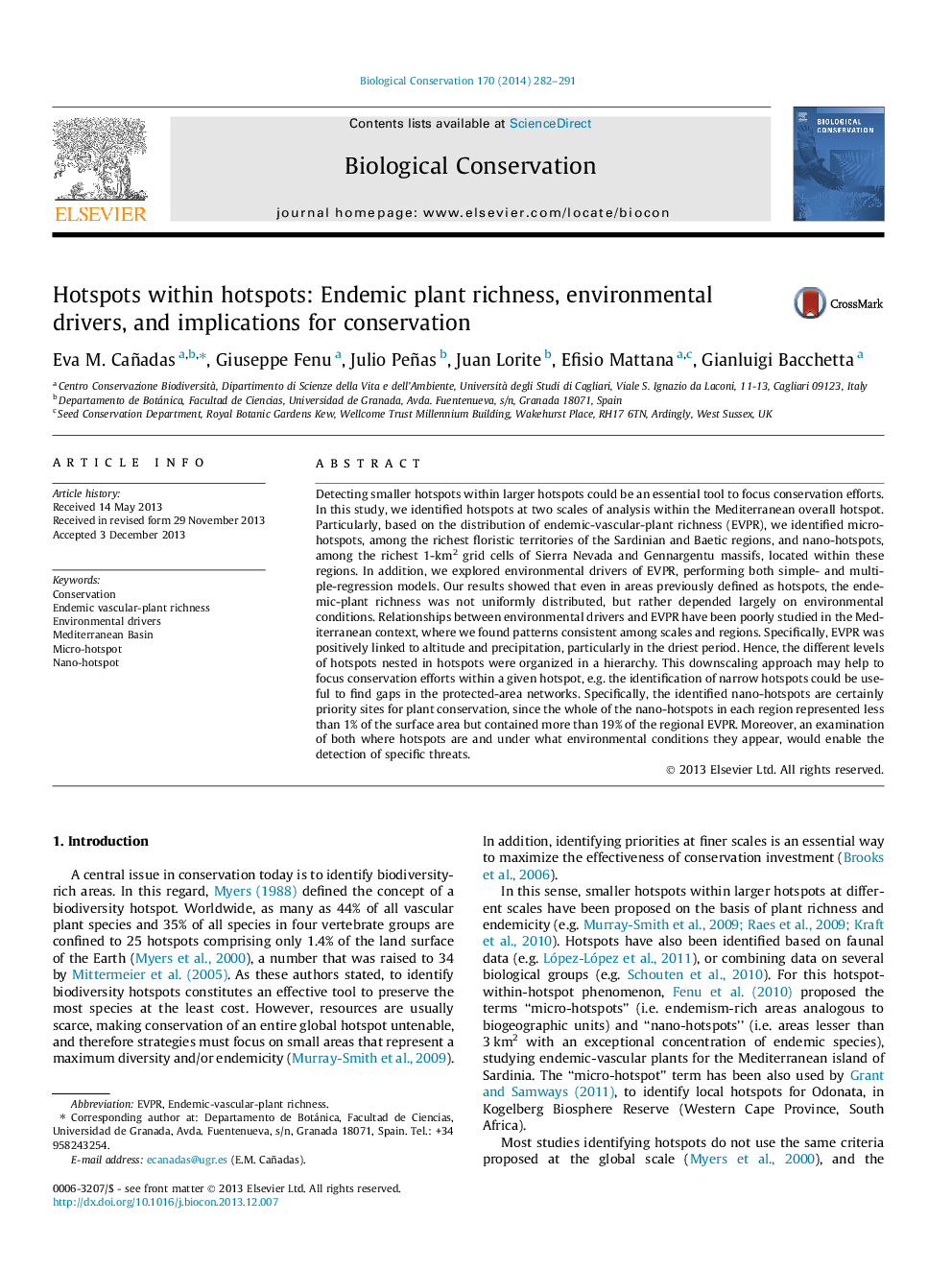| Article ID | Journal | Published Year | Pages | File Type |
|---|---|---|---|---|
| 6300179 | Biological Conservation | 2014 | 10 Pages |
Abstract
Detecting smaller hotspots within larger hotspots could be an essential tool to focus conservation efforts. In this study, we identified hotspots at two scales of analysis within the Mediterranean overall hotspot. Particularly, based on the distribution of endemic-vascular-plant richness (EVPR), we identified micro-hotspots, among the richest floristic territories of the Sardinian and Baetic regions, and nano-hotspots, among the richest 1-km2 grid cells of Sierra Nevada and Gennargentu massifs, located within these regions. In addition, we explored environmental drivers of EVPR, performing both simple- and multiple-regression models. Our results showed that even in areas previously defined as hotspots, the endemic-plant richness was not uniformly distributed, but rather depended largely on environmental conditions. Relationships between environmental drivers and EVPR have been poorly studied in the Mediterranean context, where we found patterns consistent among scales and regions. Specifically, EVPR was positively linked to altitude and precipitation, particularly in the driest period. Hence, the different levels of hotspots nested in hotspots were organized in a hierarchy. This downscaling approach may help to focus conservation efforts within a given hotspot, e.g. the identification of narrow hotspots could be useful to find gaps in the protected-area networks. Specifically, the identified nano-hotspots are certainly priority sites for plant conservation, since the whole of the nano-hotspots in each region represented less than 1% of the surface area but contained more than 19% of the regional EVPR. Moreover, an examination of both where hotspots are and under what environmental conditions they appear, would enable the detection of specific threats.
Related Topics
Life Sciences
Agricultural and Biological Sciences
Ecology, Evolution, Behavior and Systematics
Authors
Eva M. Cañadas, Giuseppe Fenu, Julio Peñas, Juan Lorite, Efisio Mattana, Gianluigi Bacchetta,
